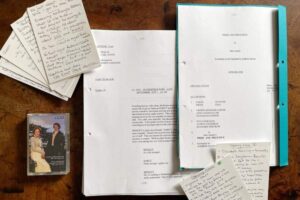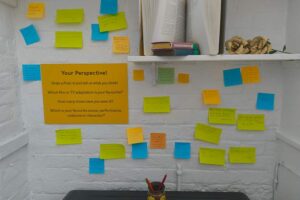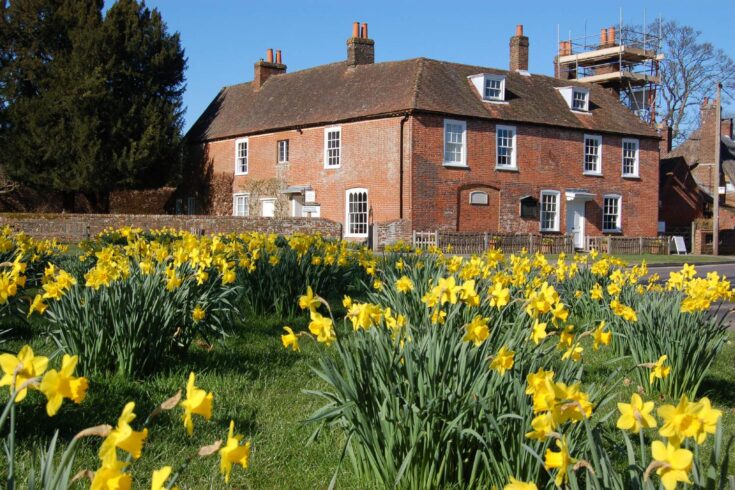This year marks the 250th anniversary of the birth of Jane Austen, one of the UK’s most enduring literary voices. From ‘Pride and Prejudice’ to ‘Northanger Abbey’, her novels continue to resonate through the generations.
Two Arts and Humanities Research Council-funded projects have played pivotal roles in helping to connect new audiences with Austen’s legacy through:
- education
- an exhibition
- digital innovation

An original script from 1995 film adaptation of ‘Pride and Prejudice’ on display at the Austenmania! exhibition at Jane Austen’s House. Credit: Jane Austen’s House, Chawton
Transforming learning through adaptation
Led by Professor Justin Smith at De Montfort University, ‘Adapting Jane Austen’ used screen adaptations of ‘Pride and Prejudice’ to develop innovative learning resources for GCSE and A-level students.
Trialled in 20 schools, the digital tools have been rolled out into classrooms across the UK, bringing to life Austen’s writing for a new generation of students.
Materials, such as production notes and screenplay drafts with handwritten notes from Andrew Davies’ famous 1995 BBC adaptation of ‘Pride and Prejudice’, offer new perspectives on this much-loved novel.
First published in 1813, Austen’s novel ‘Pride and Prejudice’ is a set text in GCSE English Literature.
Activities to challenge students
One teacher involved in the pilot, commented:
I love how there are a variety of activities and approaches per lesson plan. It’s also fantastic to have the extra challenge activities, which could be the basis for independent learning or more project-based work.
A companion project has also produced new study materials for GCSE and A-level students, available both online and at Jane Austen’s House in Hampshire.
This will help support students studying Northanger Abbey’ as part of the A-level curriculum.

Post-it notes station for visitors at the Austenmania! exhibition at Jane Austen’s House. Credit: Jane Austen’s House, Chawton
Engaging the public with Austen
Additionally, as part of ‘Adapting Jane Austen’, the project team created the Austenmania! exhibition at Austen’s Hampshire home which is celebrating 30 years of Austen on screen.
The exhibition includes adaptations of ‘Sense and Sensibility’ and ‘Persuasion’, attracting over 25,000 visitors halfway through its 12-month run.
It features digitised texts, production memorabilia and interviews with key writers and producers, including Andrew Davies.
Drama students at the University of Nottingham have also created BookTok-style videos inspired by ‘Northanger Abbey’ to connect Austen’s novels with a new generation of book lovers.
Unlocking the manuscripts
A second project, led by Professor Kathryn Sutherland, digitised Austen’s surviving handwritten manuscripts for the first time, revealing her creative process and inspiring new adaptations like Sanditon for ITV.
Professor Sutherland, said:
These handwritten manuscripts are different from print, they’re messy, and you can see creation as it happens. They are also intimate objects and give you the illusion that you’re very close to the author.
Bridging research and accessibility
Developed with the Bodleian Library in Oxford, a new transcription tool has supported students in interpreting historical texts, bridging research and accessibility.
These two projects show how research can drive new approaches to learning.
They tell the story of a cultural icon in a new and imaginative way, helping to ensure that Jane Austen’s voice continues to be heard, 250 years on.

